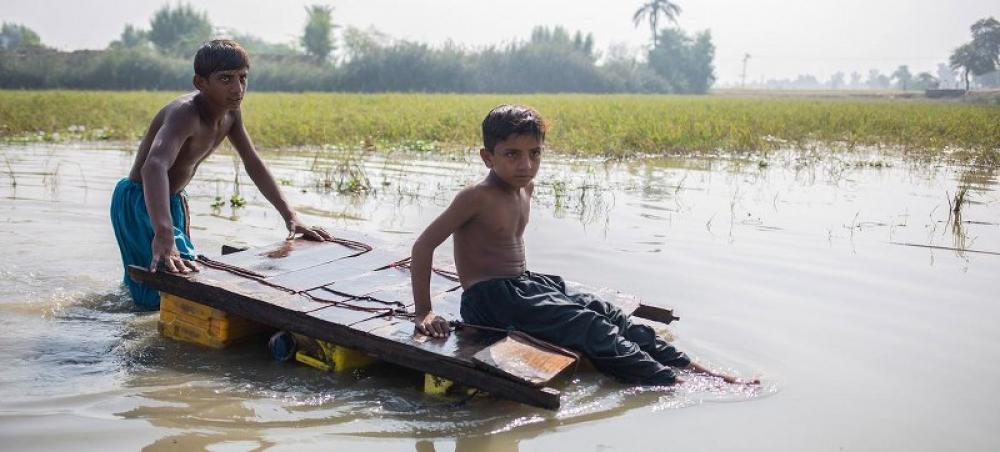Just Earth News | @indiablooms | 28 Aug 2023, 08:23 am Print
 Child Rights
Child Rights Image: UNICEF/Saiyna Bashir
The UN Committee on the Rights of the Child issued new guidance on Monday that calls for governments to take action to protect boys and girls in the face of the deepening climate crisis.
General Comment No. 26 marks the first time the Committee has affirmed children’s right to live in a clean, healthy and sustainable environment.
It provides a comprehensive interpretation of State obligations under the UN Convention on the Rights of the Child, which has been ratified by 196 countries.
The 1989 treaty outlines children’s rights, including to life, health, clean drinking water, and survival and development.
A General Comment provides legal guidance on how children's rights are impacted by a specific topic or area of legislation, with the latest addressing environmental rights with a special focus on climate change.
Amplifying children’s voices
Children have been at the forefront of the fight against climate change, urging governments and corporations to take action to safeguard their lives and the future, said Committee member Philip Jaffé.
“With its General Comment No. 26, the Committee on the Rights of the Child not only echoes and amplifies children’s voices, but also clearly defines the rights of children in relation to the environment that States Parties should respect, protect and fulfil collectively and urgently,” he added.
Accountability today and tomorrow
The General Comment explicitly addresses the climate emergency, the collapse of biodiversity and pervasive pollution.
It specifies that States are responsible not only for protecting children’s rights from immediate harm, but also for foreseeable violations of their rights in the future due to action, or inaction, today.
Furthermore, it underlines that States can be held accountable for environmental harm occurring both within their borders and beyond.
Countries that have ratified the UN child rights convention are urged to take immediate action including towards phasing out fossil fuels and shifting to renewable energy sources, improving air quality, ensuring access to clean water, and protecting biodiversity.
‘A vital step forward’
The guidance also states that children’s views must be considered in environmental decision-making and stresses the critical role of environmental education.
David Boyd, UN Special Rapporteur on Human Rights and the Environment, called General Comment No. 26 “a vital step forward” in recognizing that every child has the right to live in a clean, healthy and sustainable world.
“Governments must now take urgent action to address the global environmental crisis in order to breathe life into these inspiring words,” he said.
General Comment No. 26 is the outcome of global and intergenerational engagement, including broad consultation with UN Member States, international and regional organizations, national human rights institutions, civil society organizations, and children themselves.
‘A child rights crisis’
The UN Committee’s partner, the Swiss organization Terre des Hommes, led a process with multi-level stakeholders, significantly involving and engaging children through online consultations to inform the text.
The UN Children's Fund (UNICEF) also provided further technical expertise and helped collect views from children as part of the consultation process.
General Comment No. 26 assists in interpreting States’ commitment under the Paris Agreement on climate change to respect, promote and consider their child rights obligations when taking climate action.
“The climate crisis is a child rights crisis,” said Paloma Escudero, UNICEF Special Adviser on Advocacy for Child Rights and Climate Action.
“Every government has an obligation to protect the rights of every child in every corner of the planet, especially those boys and girls living in countries that have contributed least to this problem but are enduring the most dangerous floods, droughts, storms and heat.”
- Catastrophe alert: UN warns Asia is facing unprecedented cyclones and rainfall
- Catastrophe alert: UN warns Asia is facing unprecedented cyclones and rainfall
- India’s West Coast Turns Protector: Whale Shark Rescues Surge from Gujarat to Kerala
- Belém COP30 announces major climate finance boost
- Three dead after magnitude 5.7 earthquake hits Bangladesh, strong tremors felt in Kolkata



-1763561110.jpg)


